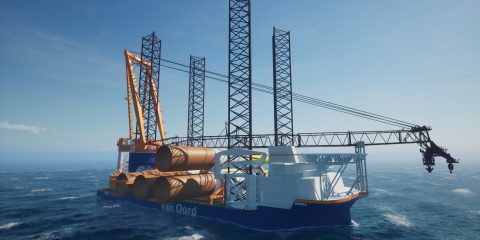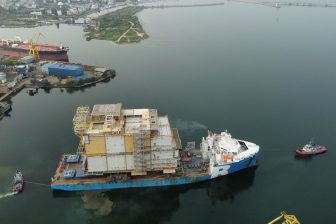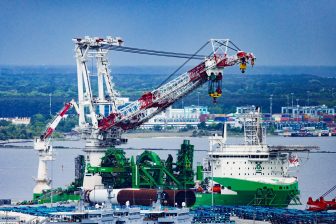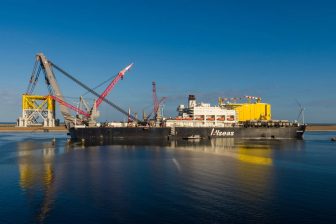
Van Oord secures first transport and installation job for newbuild Boreas
Van Oord has secured the first job for its new offshore installation vessel Boreas, as it has been appointed as preferred supplier for the transport and installation of foundations for the 1.6 GW Nordseecluster wind project in Germany, a joint venture between RWE and Northland Power.
The Nordseecluster is expected to supply green electricity to the equivalent of 1,600,000 German households annually as of 2029.
The cluster consists of four offshore wind farms in the German North Sea, 35 kilometres North of the island of Juist and 55 kilometres off the German Coast. The close proximity of the offshore sites offered the opportunity to develop one of the largest offshore wind farms in Germany. The Nordseecluster will be constructed in two phases. Van Oord will install a total of 104 extended monopiles with a weight up to 1,750 tonnes, of which 44 foundations will be installed in 2025 and 60 more in 2027.
First gig for Boreas
Van Oord will deploy its brand new offshore installation vessel Boreas for the job. It is the first project for this new vessel, which is currently being built and will be the largest of its kind once operational.
The new 175-metre Boreas is purpose-built for the transport and installation of the next generation of foundations and turbines at offshore wind farms. It has an advanced jacking system and can lift more than 3,000 tonnes. Four legs, each measuring 126 metres, allow the vessel to be jacked up and work in waters up to 70 metres deep.
With this new vessel, Van Oord is preparing itself for the increase in scale in the offshore wind industry. In addition, the Boreas fits in with Van Oord’s sustainability ambitions and aim of making its fleet more economical and energy efficient. The vessel will be able to run on the future fuel methanol, reducing the ship’s footprint by more than 78 per cent.
You just read one of our premium articles free of charge
Register now to keep reading premium articles.




